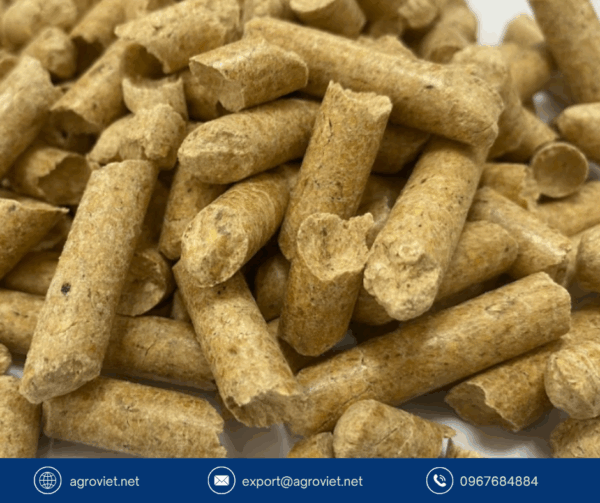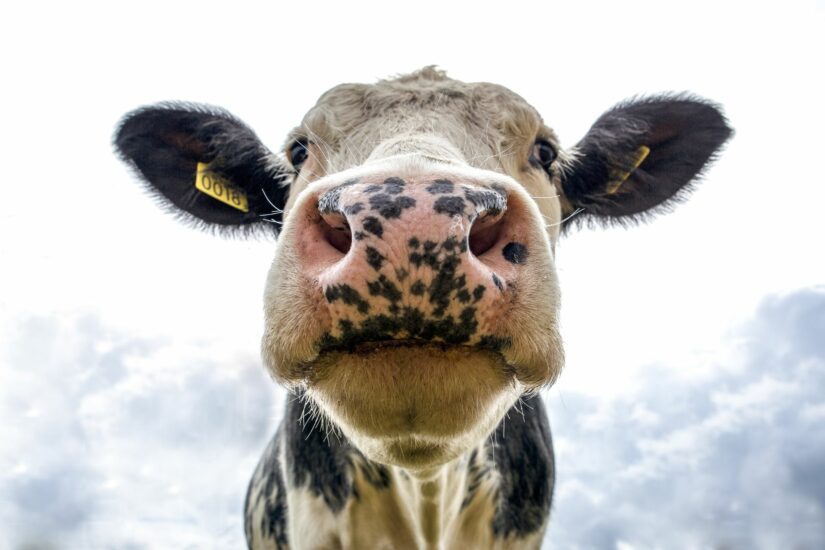How Poor Bedding Contributes to Disastrous Diseases: A Reasearch
Poor bedding choices, such as straw, reused sawdust, or insufficiently absorbent materials, create wet, unhygienic conditions that promote bacterial growth. Wet bedding softens the skin, making it susceptible to abrasions that allow Treponema and Fusobacterium to penetrate. Soiled bedding, laden with manure, serves as a reservoir for these pathogens, increasing exposure during lying or standing. The MSD Veterinary Manual highlights that wet, muddy, or dirty environments increase the risk of digital dermatitis and hoof rot by 25-40%, particularly in confinement systems with poor hygiene or inadequate bedding depth.

Bacterial Pathogens and Environmental Risks
-
Digital Dermatitis: Treponema species thrive in moist, anaerobic conditions, such as wet bedding or muddy pens. Poor biosecurity, like contaminated equipment or lax manure management, spreads the bacteria. Holstein-Friesian cows are particularly susceptible due to genetic factors.
-
Hoof Rot: Fusobacterium necrophorum, a gram-negative anaerobe, is ubiquitous in cattle environments, originating from the gastrointestinal tract and manure. Wet, abrasive bedding causes interdigital skin damage, enabling bacterial invasion. Co-infections with Dichelobacter nodosus worsen tissue necrosis. The MSD Veterinary Manual emphasizes that prolonged exposure to wet, dirty bedding is a primary risk factor, with bacterial loads in litter reaching 10^6 CFU/g in high-moisture conditions, amplifying infection rates.
Health and Economic Impacts
Both diseases cause significant pain and lameness, reducing livestock welfare and productivity. Digital dermatitis leads to chronic lameness, lower milk production, and impaired fertility, with culling rates increasing by 10% in affected herds. Hoof rot causes weight loss, reduced feed efficiency, and delayed market readiness in beef cattle, with economic losses of $120-$330 per cow in dairy herds and $100-$200 in beef operations. The MSD Veterinary Manual notes that lameness-related costs, including treatment, labor, and culling, can reach $100,000-$200,000 annually in large dairy herds. Welfare concerns also drive public scrutiny, impacting industry reputation.
Why Poor Bedding Worsens the Problem
Bedding mistakes, such as using straw or low-quality sawdust, exacerbate digital dermatitis and hoof rot by:
-
Retaining Moisture: Straw and reused bedding hold water, creating anaerobic conditions ideal for Treponema and Fusobacterium.
-
Harboring Pathogens: Soiled bedding accumulates manure, increasing bacterial loads and contamination risks.
-
Causing Skin Damage: Abrasive or insufficient bedding leads to skin abrasions, providing entry points for bacteria.
-
Lacking Hygiene: Infrequent bedding replacement allows pathogens to persist, with reused litter common in some U.S. operations increasing infection risk by 20%. The MSD Veterinary Manual stresses that unhygienic, wet conditions are a primary driver of infectious hoof lesions.
The Importance of Wood Pellets Being The Solution For Poor Bedding
Clean wood pellets, made from compressed, heat-treated sawdust, are an effective bedding solution for preventing digital dermatitis and hoof rot. They absorb up to five times their weight in moisture, keeping litter dry and reducing bacterial survival. The heat-treatment process eliminates pathogens, ensuring a hygienic environment. Unlike straw, which retains moisture, or sand, which can harbor bacteria, wood pellets expand into a soft, cushioned layer that minimizes skin abrasions and supports cow comfort. By maintaining litter moisture below 20%, wood pellets significantly reduce the conditions that foster Treponema and Fusobacterium.
Scientific Evidence Supporting Wood Pellets
The MSD Veterinary Manual and related studies confirm that bedding quality directly impacts infectious hoof disease prevalence. Research shows that highly absorbent bedding, like wood pellets, reduces litter moisture by 40% compared to straw, lowering Treponema and Fusobacterium survival rates. Their low-dust nature minimizes pathogen spread via inhalation or contact, with barns using wood pellets reporting a 25-30% reduction in digital dermatitis and hoof rot cases. The ScienceDirect study on poultry bedding supports similar principles, noting that absorbent, hygienic materials decrease bacterial loads, applicable to cattle housing. Wood pellets also promote lying time, reducing stress and boosting immunity against infections.
Key Benefits of Wood Pellets for Livestock Poor Bedding
-
Superior Absorbency: Keeps litter dry, inhibiting bacterial growth and reducing infection risk.
-
Hygienic Properties: Heat-treated to eliminate pathogens, ensuring a clean environment.
-
Comfort: Provides a soft, cushioned surface, minimizing skin abrasions and stress.
-
Low Dust: Reduces airborne pathogen spread, protecting respiratory and hoof health.
-
Cost-Effective: Durable, requiring less frequent replacement than straw or sand.
Consequences of Neglecting Proper Bedding
Failing to use absorbent, hygienic bedding like wood pellets increases the risk of digital dermatitis and hoof rot, leading to severe consequences. Lameness reduces milk yield by up to 20% in dairy cows and growth rates by 10% in beef cattle, with treatment costs averaging $100-$300 per case. Chronic infections lead to culling, with 10-15% of affected cows removed from herds annually. Poor bedding also increases labor and veterinary expenses, with large farms facing losses up to $200,000 yearly. Welfare issues, including pain and reduced mobility, raise ethical concerns and regulatory scrutiny.
Practical Tips for Using Wood Pellets Instead of Poor Bedding
To maximize the benefits of wood pellets, livestock farmers should:
-
Source high-quality, untreated wood pellets from reputable suppliers to ensure purity.
-
Spread a 1-2 inch layer and add water to expand into a 4-6 inch bedding base for optimal absorbency.
-
Clean stalls daily, removing soiled pellets and adding fresh ones to maintain hygiene.
-
Store pellets in dry conditions to prevent mold contamination.
-
Combine with proper ventilation (6-8 air changes per hour) to enhance moisture control.
Complementary Strategies for Poor Bedding And Disease Prevention
In addition to wood pellets, these practices help prevent digital dermatitis and hoof rot:
-
Foot Baths: Use regular copper sulfate or formalin foot baths to disinfect hooves, as recommended by the MSD Veterinary Manual.
-
Hoof Trimming: Schedule routine trimming every 3-6 months to remove damaged tissue and prevent bacterial entry.
-
Biosecurity: Implement strict manure management and equipment disinfection to reduce pathogen spread.
-
Ventilation: Maintain adequate airflow to reduce humidity and bacterial survival.
-
Nutrition: Provide balanced diets with zinc and biotin to support hoof health and immunity.

Economic and Welfare Impacts
Wood pellets enhance livestock welfare by reducing lameness, improving comfort, and minimizing stress-related immune suppression. Healthy cattle maintain productivity, saving farmers $100-$300 per cow in treatment and production losses. The MSD Veterinary Manual highlights that effective bedding management reduces culling rates and supports herd longevity. Wood pellets’ durability lowers bedding costs, while their biodegradable nature aligns with sustainable farming practices, meeting consumer demand for ethical livestock production and enhancing farm profitability.
Addressing Poor Bedding Challenges with Wood Pellets
Challenges include the initial setup time for wetting pellets to expand and sourcing high-quality, dust-free products. Farmers should select premium pellets and store them in dry conditions to prevent mold. Regular stall cleaning prevents compaction, maintaining absorbency. With proper management, wood pellets offer significant advantages in preventing infectious hoof diseases and supporting livestock health.
Conclusion
Poor bedding practices, such as using wet or dirty materials, significantly increase the risk of digital dermatitis and hoof rot in cattle, leading to lameness, reduced productivity, and economic losses. Clean wood pellets, with their high absorbency, hygienic properties, and comfort, are a proven solution to reduce Treponema and Fusobacterium infections. Supported by the MSD Veterinary Manual, wood pellets maintain a dry, clean environment, lowering disease incidence and enhancing welfare. By prioritizing wood pellets and adopting complementary management practices, farmers can protect livestock health, reduce costs, and ensure sustainable, profitable operations.
Read more: https://vietnambestwood.com/general/wood-pellets-best-for-green-fields/
